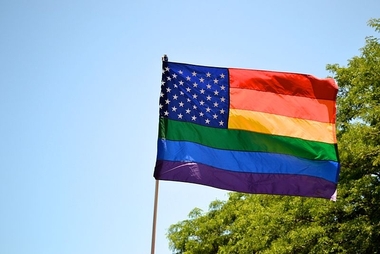Study finds a majority of LGBT+ Americans face harassment and discrimination

The majority of LGBT+ Americans say they have experienced some form of harassment or discrimination due to their sexual orientation or gender identity, according to a report by the Harvard T.H. Chan School of Public Health, the Robert Wood Johnson Foundation and National Public Radio.
The survey, a nationally representative sample of 489 lesbian, gay, bisexual, transgender and queer adults, found that more than half of them experienced slurs (57 percent) or offensive comments (53 percent). Most of those surveyed also reported that they or an LGBT+ friend or family member has been threatened or harassed (57 percent), sexually harassed (51 percent) or has experienced violence (51 percent) on the basis of their sexuality or gender identity.
Harvard researcher Logan S. Casey, who was part of the report's research team, said what sets this survey apart from previous ones is its focus on the day-to-day experience of discrimination for LGBT+ people.
More on harassment and discrimination:
Black, Muslim, trans teen battles hate in Kansas City
AZ Judge rules against refusing service to same-sex couples
Trans professor wins discrimination lawsuit against an Oklahoma university
Could Windsor and Obergefell set precedent in Hitchcock, OK case?
“Lots of work has been done about what people think about discrimination in America. This [survey] goes into great detail about people’s personal experiences of discrimination across many areas of life,” Casey explained.
For Casey, one of the most important findings is “how pervasive people’s experiences of violence and harassment are.” For example, a third of LGBT+ Americans report that they or an LGBT+ friend or family member has experienced verbal harassment while using a bathroom.
“LGBT+ people’s day-to-day experiences are still structured by discrimination, harassment and prejudice,” Casey said.
INSTITUTIONAL DISCRIMINATION
In addition to individual slights and aggressions, the report noted large portions of LGBT+ people confront institutional discrimination. At least one in five of those surveyed said they have been discriminated against in the process of applying for a job (20 percent), being paid equally or considered for a promotion (22 percent) or buying or renting a home (22 percent), the survey found.
In terms of education, among those in the LGBT+ community who applied for or attended college, 20 percent said they had experienced discrimination because of their gender identity or sexual orientation while applying or while at college.
The discrimination extends to the political sphere as well. One in 10 LGBT+ people said “they have been personally discriminated against because they are LGBT+ when trying to vote or participate in politics.”
Those surveyed also reported avoiding situations in which they may encounter discrimination.
“Roughly one in six LGBT+ people say they have avoided medical care (18 percent) and calling the police (15 percent), even when in need, due to concern that they would be discriminated against because of their LGBT+ identity," the report states.
THE INTERSECTION OF RACE AND LGBT+ IDENTITY
The report also found LGBT+ people do not experience discrimination in a uniform manner. “There are really pronounced racial differences,” Casey explained. While the survey sample was not large enough to tease out specific differences in the experiences of African-American, Latinx and Asian-American respondents, the survey did allow researchers to compare the experiences of LGBT+ people of color and white LGBT+ people.
“LGBT+ people of color are at least twice as likely as white LGBT+ people say they have been personally discriminated against because they are LGBT+ when applying for jobs and when interacting with police, and six times more likely to say they have avoided calling the police (30 percent) due to concern for anti-LGBT+ discrimination, compared to white LGBT+ people (5 percent)," the report states.
Casey said he was not surprised by these findings.
“Knowing what we know about the way multiple marginalized identities intersect ... seeing this racial disparity in the LGBT+ community was not surprising.” But, he added, “seeing them quantified in this way is very powerful.”
GENERATIONAL DIFFERENCES
While Casey said the survey did not uncover large age gaps in experiences of discrimination, he did note an important difference in the way younger and older generations think about the sources of discrimination.
Younger LGBT+ people (18-49 years of age) are more likely to say institutions (laws and government policies) are the source of discrimination, whereas older generations (50 and over) are more likely to identify individual prejudice as the problem, Casey explained.
Overall, Casey said the study helps “put some concrete data” to the experiences that LGBT+ people have been reporting for a long time.
“Even as we see advances like gay marriage or polling that says people are supportive of LGBT+ issues or know a gay person, average community members are saying that it doesn’t mean discrimination has gone away.”
Information was gathered form this article.
Copyright The Gayly – November 26, 2017 @ 4:00 p.m. CST.





